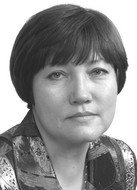Modern trends in elite high jumpers' running start improvement domain
Фотографии:
ˑ:
Teoriya i praktika fizicheskoy kultury №3 2018, pp.66-68
PhD, Associate Professor E.V. Shustova1
PhD, Associate Professor I.V. Kulishenko1
Postgraduate A.A. Shustov1
1Moscow State Regional University, Moscow
The study analyzed the ways to excel the high jump movement sequence in the running start phase, with the video captures of the running starts of 34 high-jumpers in the XIV World Track and Field Championship in Beijing being subject to analysis. A special priority was given to a few running start specifics including the startup and mid-stage versions/ styles versus the personal best (PB) results of the jumpers. Individual technical performance specifics of the running start phase by A. Shustov, European Champion and Honorary Master of Sport were rated by 13 rating parameters tracked using the video replay processing and analyzing Dartfish software. Based on the study findings, we recommend that the athletes with the high-speed running starts should accelerate in the mid-phase straight section making a special emphasis on the run pace and rhythm to facilitate the speed control at the final stage of the running sequence including the pace-increase actions. Such running phase control pattern is designed to naturally lift the body mass center (BMC) of the jumper and thereby facilitate the optimal dynamic posture for the take-off. The study data were applied to offer a few ways to excel the running start phase, including its customization to the individual motor asymmetry profiles when calculating the optimal strides.
Keywords: technique, running start, pace and rhythm pattern, high jumpers, individual profile, asymmetry.
References
- Ekimov V.Yu., Shur M.M. Biomekhanicheskiy analiz tekhniki pryzhka v vysotu sposobom «Fosberi-flop» [Biomechanical analysis of Fosbury-flop high jump technique]. Teoriya i praktika fiz. kultury, 2003, no. 6, pp. 35-38.
- Itogi vystupleniya i dinamika podgotovlennosti legkoatletov-prygunov sbornoy komandy Rossii v olimpiyskom tsikle 2009-2012 gg.. Metod. posobie [The results of performance and fitness dynamics of Russian national team jumpers in the Olympic cycle 2009-2012. Teaching aid]. Moscow: RAF publ., 2013, 184 p.
- Marchenko A.A., Adashevskiy V.M., Ermakov S.S. Biomekhanicheskie aspekty tekhniki pryzhka v vysotu [Biomechanics of high jump technique]. Fizicheskoe vospitanie studentov, 2013, no. 2, pp.11-17.
- Ratov I.P., et al Biomekhanicheskie tekhnologii podgotovki sportsmenov [Biomechanical technologies of athletic training]. Moscow: Fizkultura i sport publ., 2007, 120 p.
- Strizhak A.P. Pryzhok v vysotu. Sistema podgotovki prygunov v vysotu vysokoy kvalifikatsii. Ucheb.-metod. sb. [High jump. Training system for highly skilled high jumpers. Study guide]. Moscow, 2015, 88 p.
- Shustova E.V., Shustov A.A. Osnovnye tendentsii formirovaniya tekhnicheskogo masterstva u vysokokvalifitsirovannykh prygunov v vysotu, ispolzuyuschikh skorostnoy variant ottalkivaniya [Main trends in formation of technical skills of highly skilled high jumpers with high-speed take-off]. Mater. respubl. nauch.–prakt. konf. 'Problemy razvitiya massovoy fizicheskoy kultury i sporta' [Proc. republic. res.-practical conf. 'Problems of development of mass physical culture and sports'], Karaganda, 2015, pp. 90-94.



 Журнал "THEORY AND PRACTICE
Журнал "THEORY AND PRACTICE